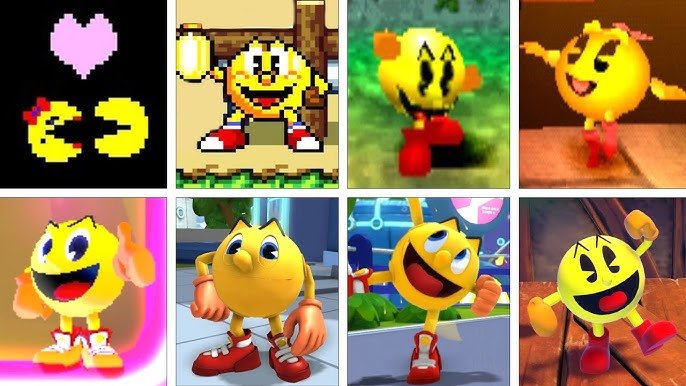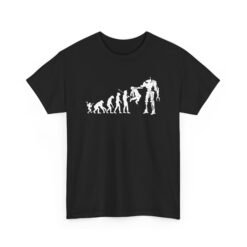Business History, Entertainment, Gaming, Gaming History
The Evolution of Pac-Man: From Puck-Man to Gaming Icon
The Birth of Pac-Man: Inspiration and Concept
The inception of Pac-Man is rooted in a unique blend of creativity and cultural awareness. Created by Toru Iwatani, a video game designer at Namco, the idea emerged in 1980 as a response to the lack of appealing video games for female audiences. The original name, ‘Puck-Man’, derived from the Japanese word ‘paku’, which means ‘to chomp’ or ‘to munch’. This concept encapsulated the central gameplay mechanics: players control a character that eats dots while avoiding ghosts. The playful, simple nature of this concept was intended to attract a diverse demographic, significantly broadening the game’s appeal.
During this period, the gaming industry predominantly catered to a male audience, with themes often revolving around violence or competition. Iwatani envisioned a game that was less aggressive and more focused on strategy and exploration. This approach was revolutionary; it aimed to invite players who were previously disenchanted with the existing gaming landscape. By introducing a character that players could empathize with and enjoy controlling, Pac-Man became a symbol of inclusivity in a traditionally exclusive environment.
The design of Pac-Man itself is emblematic of its core philosophy. The character was intentionally crafted to resemble a slice of pizza with a wedge missing, further emphasizing the act of eating. This design choice contributed to the game’s friendly and lighthearted aesthetic. Additionally, the vibrant colors and engaging sound design made it appealing across age groups and genders. By consciously selecting a theme centered around food consumption and avoidance rather than combat, Iwatani and his team successfully laid the groundwork for an enduring icon that would ultimately transcend its initial cultural boundaries.

The Name Change: From Puck-Man to Pac-Man
The iconic character, originally known as Puck-Man, underwent a significant transformation before its North American launch. The decision to rebrand Puck-Man to Pac-Man was largely influenced by concerns from the game developers and the marketing team at Namco. They recognized that the original name posed a potential risk due to its phonetic resemblance to an inappropriate term. Specifically, the letter ‘P’ in ‘Puck’ could easily be vandalized to an ‘F’, leading to potentially negative connotations that could tarnish the game’s reputation in the Western market.
This concern was not trivial; the gaming industry during the 1980s faced numerous challenges related to product branding and market reception. As a result, the marketing team proposed the name change as a safeguard against possible misinterpretations. The term ‘Pac-Man’ was chosen because it retained a playful essence while also being easy to remember and pronounce. Additionally, the new name cleverly associated the character with the Japanese word “paku,” which means to munch or gobble, thereby enhancing the game’s thematic elements of eating pellets and avoiding ghosts.
The implications of this name change extended beyond a simple rebranding. It significantly impacted the game’s identity and marketing strategy. By adopting a name that was not only unique but also catchy and fun, Pac-Man became a cultural phenomenon during its release in 1980. The decision proved to be advantageous, as it facilitated the game’s acceptance and popularity within Western markets. Moreover, Pac-Man’s design and gameplay were effectively complemented by its new name, contributing to its status as a gaming icon that continues to influence pop culture today.

The Cultural Impact of Pac-Man
The transition from “Puck-Man” to “Pac-Man” was a critical milestone in the game’s journey toward becoming a cultural phenomenon. Launched in 1980 by Namco, Pac-Man originally bore the name “Puck-Man,” which was inspired by the shape of the character resembling a hockey puck. However, as the game was prepared for its release in the North American market, concerns about potential vandalism—specifically, the alteration of the letter “P” to an “F”—prompted a rebranding to “Pac-Man.” This change not only ensured the game’s reputation but also contributed to its widespread appeal.
The rebranding was essential in shaping the character of Pac-Man as not just a game character, but a cultural icon. As players navigated through mazes, consuming dots and evading colorful ghosts, they found a relatable and non-threatening character that transcended traditional gaming narratives. This was among the first times that a gaming character had such a level of charm and likability, leading to a broader acceptance of video games among the general public, particularly women, who were previously considered outside the target demographic for gamers.
Pac-Man’s cultural impact extended well beyond the arcade. The game was instrumental in popularizing arcade gaming in the 1980s, contributing to the establishment of arcades as social hubs for youth culture. Its influence inspired a plethora of merchandise, animated television series, and even a hit song by Buckner & Garcia. Furthermore, the character’s simplistic yet engaging design set a precedent for character design in video games that followed. Consequently, Pac-Man’s legacy remains evident in gaming today, as many characters owe their distinctive designs and narratives to this pioneering figure in gaming history. The game’s success demonstrated that video games could be both an art form and a significant aspect of popular culture. Furthermore, it set a standard for character-centered narratives in gaming that has continued to evolve over the decades.

Lessons Learned: Insights from Pac-Man’s Journey
The evolution of Pac-Man, from its initial branding as Puck-Man to its enduring status as a gaming icon, provides valuable insights into the importance of cultural sensitivity and adaptation in branding strategies. Initially launched in Japan, the game’s name faced a critical challenge when introduced to Western markets. The potential for unintended misinterpretations of the original name, especially with the risk of vandalism to the arcade cabinets, led to a strategic rebranding that ultimately impacted Pac-Man’s lasting appeal. This case underscores the necessity for businesses, especially in the gaming industry, to thoroughly assess cultural implications when marketing products across diverse populations.
Furthermore, the success of Pac-Man demonstrates how cultural adaptability can enhance brand longevity and acceptance. Game developers today can glean lessons from the decision to modify the title for Western audiences, as it highlights the need for brands to resonate with their target demographics. By embracing cultural nuances, businesses can foster a connection that transcends geographical boundaries, thereby enhancing consumer loyalty and broadening their market reach.
Additionally, Pac-Man’s journey serves as a cautionary tale regarding the repercussions of public perception on marketing decisions. A miscalculated understanding of cultural contexts can lead to negative backlash, as seen in various industries beyond gaming. Therefore, modern marketers must invest in thorough market research and engage culturally diverse teams to avoid oversights that could damage their reputations and sales.
In conclusion, the story of Pac-Man illustrates the complex relationship between branding, cultural sensitivity, and audience engagement. By learning from this iconic character’s transformative journey, contemporary game developers and marketers can navigate cultural differences effectively, ensuring their products resonate positively within the global marketplace.
Business and Finance
Fairytale and Fantasy
🐉🔥 Dragon Enthusiast Unisex T-Shirt – Vintage Vibes, Legendary Style
Business and Finance
₿🔥 Bitcoin Logo Unisex T-Shirt – Crypto Style, Classic Comfort
Funny and Sarcastic

















